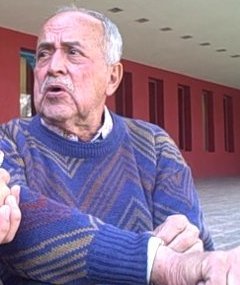


Residents Affected By Guerrero Dam Reorganize
Communities Are on Alert Following The Approval of the Project's Construction Budget
By Fernando León
Special to The Narco News Bulletin
December 26, 2010
For seven long years communities and ejidos (communally owned land) that would be flooded due to the construction of the La Parota dam in the state of Guerrero have resisted attempts by the government to dispossess and displace them from their lands. Although opponents of the dam have been in the majority in meetings held to decided on its construction, federal and state governments continue to pressure the communities. Last November Mexico’s Congress approved a budget for the dam, which has lead to a stronger reorganization among affected residents.
The La Parota hydroelectric project was launched in 2003 as part of the construction of dozens of dams that would make up the Puebla-Panama Plan, a controversial infrastructure megaproject that involves Mexico and Central America. The plan has now changed its name to the Mesoamerican Project. Since its beginning, the Guerrero dam faced strong opposition from the communities that would be affected by it because its construction would flood 14,000 hectors, displacing more than 3,000 people who have lived there for generations.
The communities and ejidos, united under the Council of Ejidos and Communities Opposed to the Parota Dam (CECOP in Spanish initials), have been able to stop the construction. However, on November 16 the national Congress approved a budget for the dam as a part of 2011 appropriations for Guerrero. Under such a threat, CECOP member Rodolfo Chávez Galindo tells Narco News that communities are on alert. He says although community vigilance to stop the Federal Electricity Commission (the entity in charge of the construction) from coming into the lands has been ongoing since 2003, it has now intensified.
 Rodolfo Chávez, member of the CECOP, in an archive image. DR 2010 Erin Rosa. |
Throughout the CECOP’s struggle the state and federal government have tried to co-opt specific ejidos that would make up a part of the flood lands. During the administration of Mexican President Felipe Calderón a program called Opportunities from the Ministry of Social Development was launched. The program, according to its website, “offers incentives for education, health and nutrition, to promote capacity building of families in extreme poverty,” which have been used to demobilize the population according to Velasco. He says that every time SERAPAZ would hold a workshop in a community the regional office for the program would convene an urgent meeting for its beneficiaries, who would have 40 pesos deducted if they didn’t attend. For Velasco, this undermined the intention of the SERAPAZ workshops since many participants couldn’t attend for fear of losing their income. It appeared to be an attempt to sabotage the workshops.
Despite this situation, Velasco and Chávez Galindo know that in the last few weeks there has been an important reorganization in the communities. Regardless of whether violence from Calderón’s drug war is present in the region, the residents are more resolved than ever to stop the La Parota dam. The attempts by both state and federal governments to instill fear in the population by increasing militarization and approving the hydroelectric budget have only strengthened the inhabitant’s convictions to defend their land. With seven years of organizing, the CECOP is made stronger in front of these new challenges.
Click here for more Narco News coverage of Mexico
Lea Ud. el Artículo en Español
- The Fund for Authentic Journalism
For more Narco News, click here.




